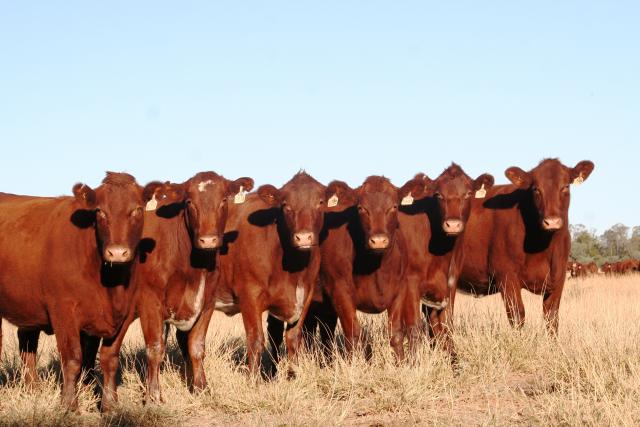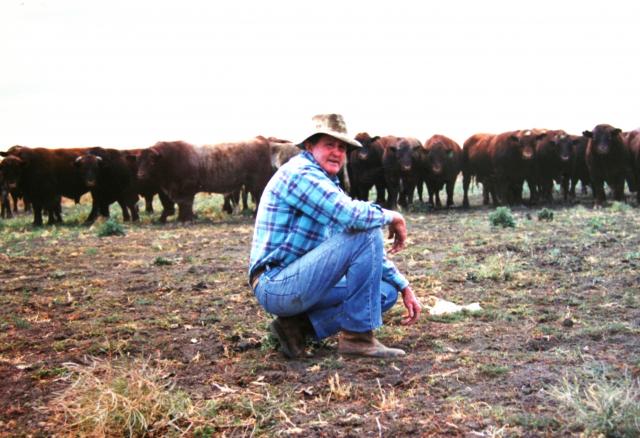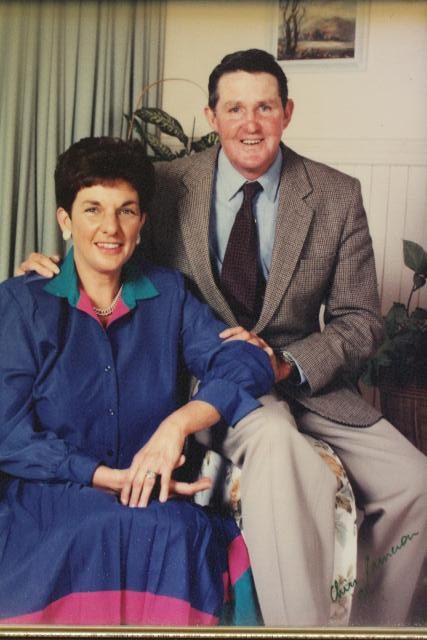
The world’s largest herd of performance-recorded Shorthorns began as a dream of an aspirational 14-year-old living in a tent beside the Condamine River at Condamine.
Godfrey (Goff) Morgan had refused to return to his Brisbane boarding school after one tough year, instead setting his sights on developing the virgin brigalow block, Myall Grove.
As he strove to develop the Shorthorn cattle he sought to produce, challenges were vast and varied, including prickly pear, brigalow regrowth, water, fencing and “death duties“.
Following solid breeding principles such as single-sire joining of cattle in small mobs to allow meticulous recording of genetics, Goff’s goal was a fertile, low-maintenance cow herd that produced copious amounts of quality beef.
Indeed, his sires were keenly sought at multi-vendor auctions throughout Queensland before he registered The Grove Shorthorns in 1969 and began an annual on-property sale 39 years ago.
“Goff lived in a tent for the first five years, but he was wise well beyond his scholastic education,” son Spencer Morgan said.
“He was keen to adopt new technologies and encouraged us to keep exploring different ways to do things, not just to follow in his footsteps.
“He certainly gave us a work ethic, a set of morals and shared his ideas but was really happy for us to control and write our own page in the book. He didn’t want us to just do what he’d done.”
Alongside wife Mary (née Innes), Goff built a solid foundation for his sons.
Spencer and wife Sophie now run The Grove Shorthorns with his brother Godfrey and wife Megan, a partnership Spencer says is so successful due to their small differences.
“We don’t always agree on everything at first,“ he said. “Godfrey is a little bit more conservative than me, which is good because sometimes my ideas do need a fair bit of reining in!”
The Morgans now run 1200 Shorthorn and Durham Black breeders across the 7891-hectare Myall Grove.
Other properties in the Flinton region are primarily breeding blocks, with all young cattle returning to Myall Grove at weaning.
Spencer says The Grove’s breeding program is a mix of both artificial insemination, embryo transfer and single-sire joining groups, a nod to their father’s legacy.
“Fertility is still, and always will be, our most important trait,” he said.
“Once you have fertility well and truly embedded, you target other traits that are essential to achieve an article that will hit the higher end of Meat Standards Australia (MSA) boning groups, hopefully having your end product topping the commodity beef product space.
“By having a simple breeding goal and being able to accurately genetically describe our product we hope it gives our client-base more confidence and makes the whole process easier for our clients to make real genetic gain in their herds.”
Bloodline selection is ever-evolving, Spencer says, and is based on Breedplan statistics, abattoirs’ carcase data, as well as MSA feedback.
“Every animal bred is performance-recorded with Breedplan, which allows us to accurately describe the sires’ genetically, as well as show clients their phenotype.
“We think we can present a pretty accurate picture today yet there is still lots to keep striving for.”
Spencer says strong results in the RNA’s Paddock to Palate competitions over 23 years – including overall wins in 11 of those and claiming Reserve Champion pen six times – show The Grove’s breeding program “is hopefully on target with what we are trying to achieve”.
“The most encouraging aspect to come from the prestigious Paddock to Palate competition is we have been successful across a wide range of feeding regimes and have performed very well in all aspects of the trial.
“From weight gain through to yield and meat quality it seems to back our motto of ‘Quality Beef, More of It’.”
Calving on Myall Grove occurs over an eight-week period during spring and autumn, with the aim of weaning between late March and early May.
Steers and surplus females are placed on grazing crop, if available, or brought into the on-farm feedlot to finish and sell straight to abattoirs at between 350 kilograms to 400kg dressed weight.
Spencer says this allows them to collect feedback from these animals, which is then added to their Breedplan data.
“We just wait and see where the season sits and where the best market is presenting ahead of the forthcoming season and we aim to turn them off for that job,” he said.
“We are really about breeding cattle that have a natural ability to finish without any artificial help.
“Most recently, we’ve been doing an HGP-free program through Kilcoy (Global Foods north of Brisbane) but, even though it’s Chinese-owned, they’re unable to sell to China due to labelling issues.
“So, the cattle are now sent to Bindaree Food Group at Inverell and we sell quite a lot of our surplus females/ cast-for-age cows – that sort of thing – to JBS Australia.”
The latest string to The Grove’s bow is expansion into the branded beef market, with an initial contract to supply 50 head of first-cross Shorthorn/Wagyu per month.
“It’s not big but it’s building,” Spencer says. “Given it’s a brand new area, we’re not jumping into it blindly, we really want to learn about the final section of the supply chain and where we can fit in before considering any further expansion in this area.
“As, while we’ve got a fair knowledge base for breeding cattle, feeding them and hitting specs, marketing is a whole different entity and we’re just trying to learn our way through that.
“But it is a new challenge and that keeps you interested.”
Aside from boarding at Toowoomba Grammar for six years and attending Gatton Agricultural College for 12 months, Spencer Morgan has lived his entire life on Myall Grove, a property his great grandfather Godfrey Morgan settled in 1908.
Godfrey Morgan was a Victorian newspaper proprietor who launched the Donald Times in 1875, sensing a business underpinned by rising agricultural and pastoral activities would be more viable than gold prospecting.
Then, the Queensland Government began booking advertisements in the newspaper seeking graziers to settle on land in the Sunshine State, enticing Godfrey north on horseback.
The rest is history.
Spencer says he is thankful to have worked full time for more than a decade with his late father, Goff, before his untimely, premature death.
“I think he would be proud of what we’ve all achieved,” he said.
“Dad only really had two passions and that was his love for his family and his love for Myall Grove, which included the Shorthorns.
“And he just worked very, very hard to ensure the family was in a reasonable position to try and grow and expand the business.
“I will be very happy if I can manage to achieve something remotely similar.”








